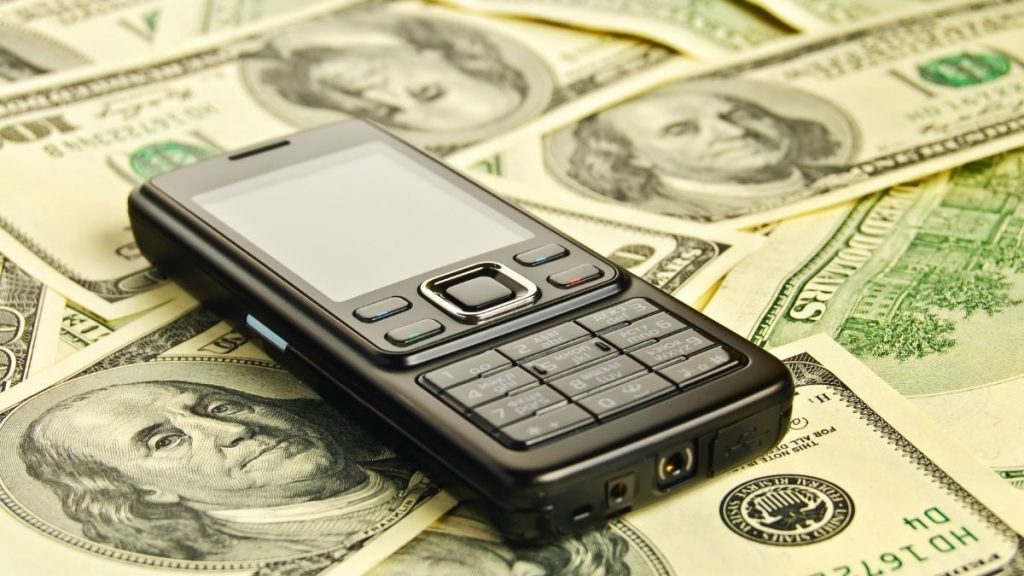
Our monthly cell phone bills are usually sky-high. Luckily, there are a few ways to save money on your cell phone bills. You don’t need to make huge changes, like switching out your Samsung Galaxy for a secondhand flip phone (although that would save a lot of money).
But there’s a good reason behind the lofty prices: Smartphones have tons of awesome features, some of which you may not even know about. Sometimes, we’re so busy downloading apps that we overlook built-in options that can spare us time, headaches and frustrations. Tap or click here for three smartphone tricks you wish you’d known all along.
If you’re looking for some ways to save money on your phone bill, you’ve come to the right place. We’ve got five helpful tips to save bucks — and one solution that could even make it free. Scroll down and see what works for you!
1. Make sure your service address is up to date
Each month, your bill comes with taxes and fees that are based on where you live. Some states may take a larger chunk in taxes than others. So if you recently moved and haven’t changed your service address, you should update it ASAP.
After all, an out-of-date service address could cost you a ton of cash. Here’s an example. According to NerdWallet, you can save an average of $103.72 by moving from Illinois to Wisconsin.
Even better: Since these figures are based on individual cell phone bills, you would save a lot more on a family plan. Here’s another potential move that could save money. If you relocate to Oregon from Washington state, NerdWallet says you’d pocket an average of $170 a year.
Sounds good, right? Luckily, it’s super easy to update your service address. Just log in to your account, head to your user profile and enter your new location.
2. Set up autopay
This is an efficient and easy way to manage expenses. By putting your bills on autopay, you’ll never forget a due date. It lowers your risk of a late fee and saves you time and money in the long run.
You can save $5 or $10 a month with most major carriers by enrolling in autopay. For instance, T-Mobile offers a $5 discount for every line you set up with autopay. In other words, a family of five could save $25 a month — all because they automated their payments.
Look up your carrier and see its offerings. Some companies may have specific requirements, like Verizon, which won’t let you use a credit card. If you want to sign up for automatic payments, you’ll have to link to your debit or checking account.
AT&T also has a savings option for customers on its Unlimited and Unlimited Plus plans, which cost $65 and $75 a month, respectively. Sign up for autopay and you and can save up to $15 every month.
You can’t go wrong with autopay. It will save a good chunk of cash each month.
3. Find the right plan
Depending on your demographic, you could be eligible for steep discounts. There are special deals for military members, students, government workers and more. The same goes for older folks; in fact, freebies are among the best perks of joining the seniors club.
We’re not talking about early-bird specials, either. If you’re 55 and up, there’s a new plan that gives you all the features you want for one low monthly price.
If you’re a little younger, you can still find the perfect plan based on your needs.
First off: Think about the type of user you are.
How much internet speed do you need? For example, the speed a gamer needs won’t be the same need as someone who’s just using their computer to browse the web and check emails.
Once you hammer down your needs, you can start cutting out options that don’t suit you. If you’re not sure how to analyze your usage, here’s a good place to start:
- Do you have fewer than three devices you just use to browse the internet? You can get by with a basic package that offers download speeds up to 10Mbps.
- Are you a gamer, or just someone who streams lots of content? If so, you need a plan that offers speeds up to 100Mbps.
- What if you don’t stream much, but you want to browse the web, download music and check emails? You’ll want a plan with speeds up to 25Mbps.
Also, remember that most companies put a cap on the amount of data you can use each month.
Because of that, you should find a plan that offers enough data for your needs. Otherwise, you might go over the limit, which comes with costly fees. Speaking of which, follow this next step to save yourself a fortune.
4. Check your bill for hidden fees
While it’s never fun to rummage through paperwork, saving money is a worthy reward. You may find that you’re paying for something you don’t even need. It could even help you find some cheaper alternatives.
Here’s a cool trick you may not know about. If you’ve been using telephones to stay close to your loved ones during the pandemic, you may find roaming and long-distance charges on your bill. We’ve got the perfect trick to help you cut down that fee: Make phone calls from your computer.
Once you start calling through Wi-Fi, those extra fees vanish. This is especially helpful for anyone making international calls.
There are a ton of other costs you have to watch out for. Research shows that most Americans spend a sizable dollar amount just by paying off these fees. For example:
An American household family that spends around $100/mo on four wireless phones may spend around $270 per year in taxes, fees and other surcharges.
Tax Foundation
To make matters worse, some of the most common fees have vague definitions, so you don’t know exactly what you’re paying for. When you check your bill, you may see “administrative charges.” The term is hard to pin down, but it includes network maintenance and fees that carriers impose on your provider for delivering calls.
Here are some other fees you may find on your bill:
- Emergency response fees: Your cell phone carrier helps local governments pay for fire and rescue services. Many pay it off through a fee on customers like you.
- Local taxes: If you have wireless service, you’ll have to contribute to the community. The money you pay depends on where you live, though.
- Universal Service Fund: The federal government makes providers contribute to this fund. Of course, many companies pass the payment along to you through a fee.
In general, fees are there to stay, so you need to find the lowest price for your actual service. Plan those fees into the full cost, so you’re not surprised by your bill.
5. Add a line
In general, you’ll save money by bundling or adding more people to your plan. Maybe there are a few family members who aren’t on your plan. Ask them if they want to hop on and save money together.
There’s just one caveat: Set up a plan on who is paying who well in advance. You don’t want any confusion once the bill comes around.
Working together will help you and your loved ones cut down on the costs of cell phone service. If you also want to save money on your internet bill, we’ve got all the answers you need.
Now, it’s time to tell you about a government assistance program that could give you free monthly data, unlimited texting and free monthly minutes. If that weren’t enough, the Lifeline Free Cell Phone Service also hands you a free phone.
Every single state except Montana offers these programs. You also qualify if you live in the District of Columbia or Puerto Rico. Although the programs and eligibility vary state by state, it’s worth looking into. If you’re on government assistance or below a certain income threshold, you may qualify.
However, the requirements for this program vary state by state.























